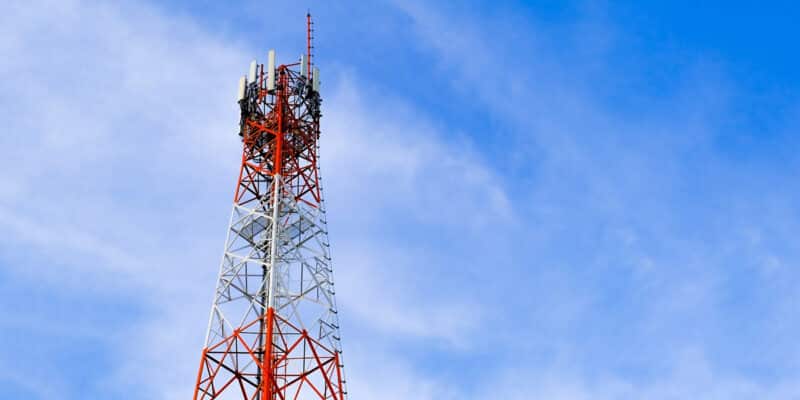On March 13, Dr. Peter Meijer, an inventor-entrepreneur added to his ongoing Twitter thread about how internet connectivity in Ukraine continues to hold up despite the Russian invasion. “I’m surprised how Internet activity in Ukraine holds up, with 13 users of The vOICe reported in the past 30 minutes, including 3 users in Kyiv,” he tweeted. Meijer was referring to an internet-connected headset for the visually challenged he had developed that has turned out to be an unexpected indicator of the surprising resilience of a besieged Ukraine’s network infrastructure.
The country’s largest cities have been losing territory since Russia started its invasion of Ukraine on February 24. But despite the constant attacks on urban infrastructure and cities, internet access continues to work even in areas under shelling. Analysis by Cloudflare showed that days into the invasion, user traffic remains active from major urban centres that have still kept out Russian forces, while cities like Mariupol, where invading forces have made broader gains, have seen web traffic nosedive. Newer data shows that user traffic from Ukraine has reduced, but remains active day to day.
Entrackr wrote to Derzhspetszviazok, more formally known as the State Service of Special Communications and Information Protection, the agency tasked with protecting Ukraine’s telecom networks. India’s equivalent of Derzhspetszviazok is the National Critical Information Infrastructure Protection Centre.
“Occupants are persistently attempting to destroy radio and television broadcasting infrastructure. There was an attack against the TV Tower in Kyiv,” an agency spokesperson told Entrackr. “TV Towers in Kharkiv and other cities were attacked as well.” However, the agency added, “we should admit that networks of operators and providers work in a stable way except on the territories of active combat action or where they were physically destroyed by the occupants’ troops.”
Derzhspetszviazok said it is working with telecom operators and other parts of the government to deploy repair teams when networks are damaged. On top of this, it said, “Every operator carried out some work to provide for systems’ functioning in emergency situations.”
Ukraine is also providing WiFi in some bomb shelters, and launched a website to apply for access to the service. (Elon Musk’s SpaceX also sent a few satellite internet terminals to the country for “destroyed cities”, but it’s unclear just how many Ukrainians have access to WiFi provided by the Starlink service.)
What telcos are doing
In spite of years of tension between Ukraine and Russia, especially since the annexation of Crimea in 2014, Derzhspetszviazok said that there were “no such projects aimed at increasing the stability of the network itself on the state level,” and that telecom operators themselves were taking the lead in a few ways.
“[Telecom] operators that provide mobile and Internet services [through] 4G understand pretty well those threats facing them in cyberspace. That’s why they pay much attention to their own cyber stability,” Derzhspetszviazok said. Telecom operators — competitors in peacetime — have essentially linked up their networks so that their customers can connect to rivals’ networks if their own cell towers go down.
“From now on, if the network of one of the mobile operators is temporarily not working in your city, you can connect to another and use not only calls and SMS, but also mobile Internet at speeds up to 512 Kbps,” Kyivstar, Ukraine’s largest telecom operator, announced on Twitter.
Data hosting companies aren’t too far behind — Virtual Systems, a small hosting company with offices in Kyiv and Amsterdam, said that its data centres were protected not just by having power backup, but also by having cables carrying data “buried independently of each other” deep in the ground, employing “paramilitary guards” to patrol facilities.
But just how many customers continue to have data access? A surprising majority, Derzhspetszviazok claims. “In general, 75% of regional communication centres of Ukrtelecom work and provide services to the subscribers,” the agency said. Ukrtelecom is a large wired internet and landline provider. It lifted speed limits in several areas of the country after the invasion started, the agency said.
Meanwhile, it’s not just artillery and shelling that threatens networks; there is also the concern of cyberattacks. While the Ukrainian government has spoken of Russian cyber attacks on its infrastructure, even hardline Russian programmers acting independently seem to be doing what they can by knocking government websites offline, the BBC reported. “Russia’s attacks continue in cyberspace. We cannot say everything, but state institutions and vital infrastructure are constantly feeling them,” Derzhspetszviazok said.
Lessons for other countries
India in particular has had a poor track record with telecom resilience. Even weather events can have disastrous effects: cyclone Amphan knocked off mobile and broadband operators’ networks substantially in West Bengal, including Kolkata, the state capital. Power cuts and flooding in data centres have also impacted connectivity in the past.
And this was all in peacetime. India, not unlike other developing countries, has vulnerable networks that have time and again failed to withstand setbacks that are nowhere at the level of an onslaught from a foreign military. Unlike other developing countries though, India borders two geopolitical rivals with whom it has border disputes. And one of these countries, China, is a formidable cyber power.
The Ukrainian government told Entrackr that it built a legal framework for securing networks over the years, designating telecom networks as “vital infrastructure,” and developing recommendations and guidelines to protect them.
But Derzhspetszviazok did not appear to be in a position to celebrate or lecture other countries on how its example might be useful to study. “It’s too early to speak about [lessons for other countries], because hostilities are still underway,” the agency said.
But, the agency said, it was encouraged by action to keep the country online. “The providers are forming joint repair teams to conduct repair works faster, to give one another reserve on the external traffic in order not to deprive people of information. This is an unprecedented unity. We are proud of our telecommunication branch,” it said.














